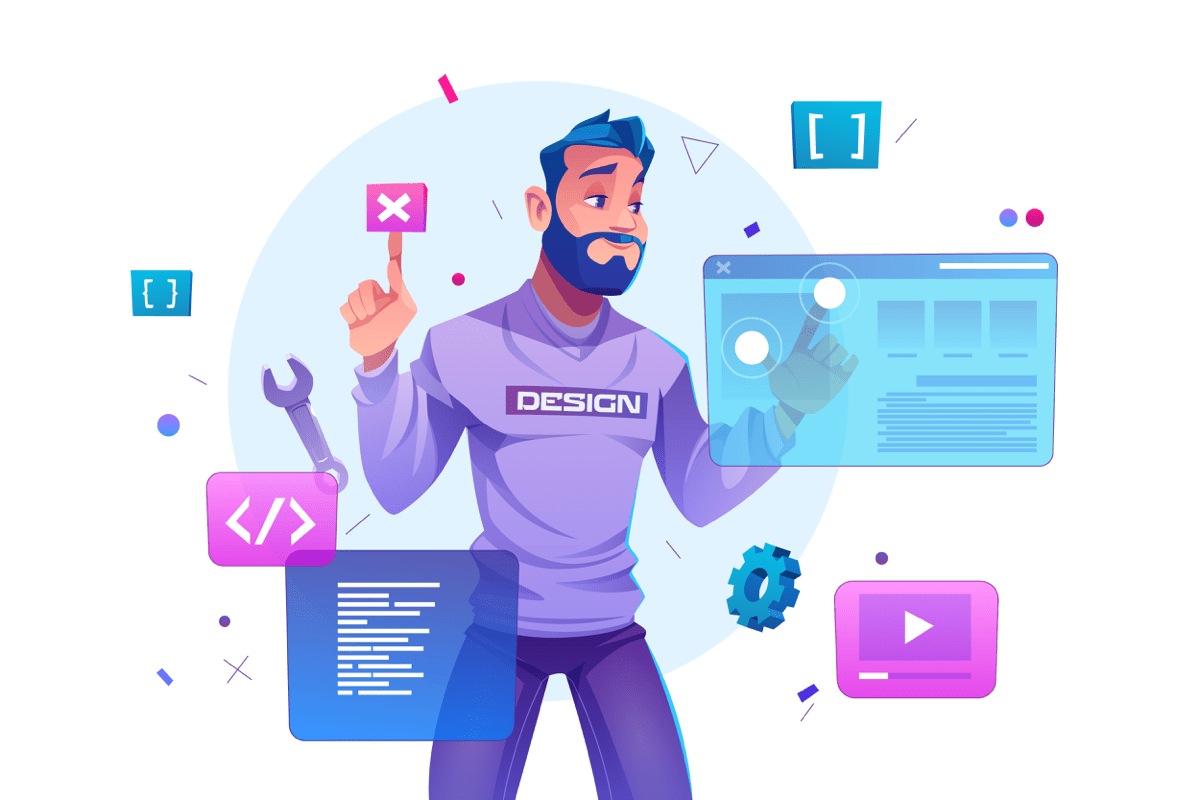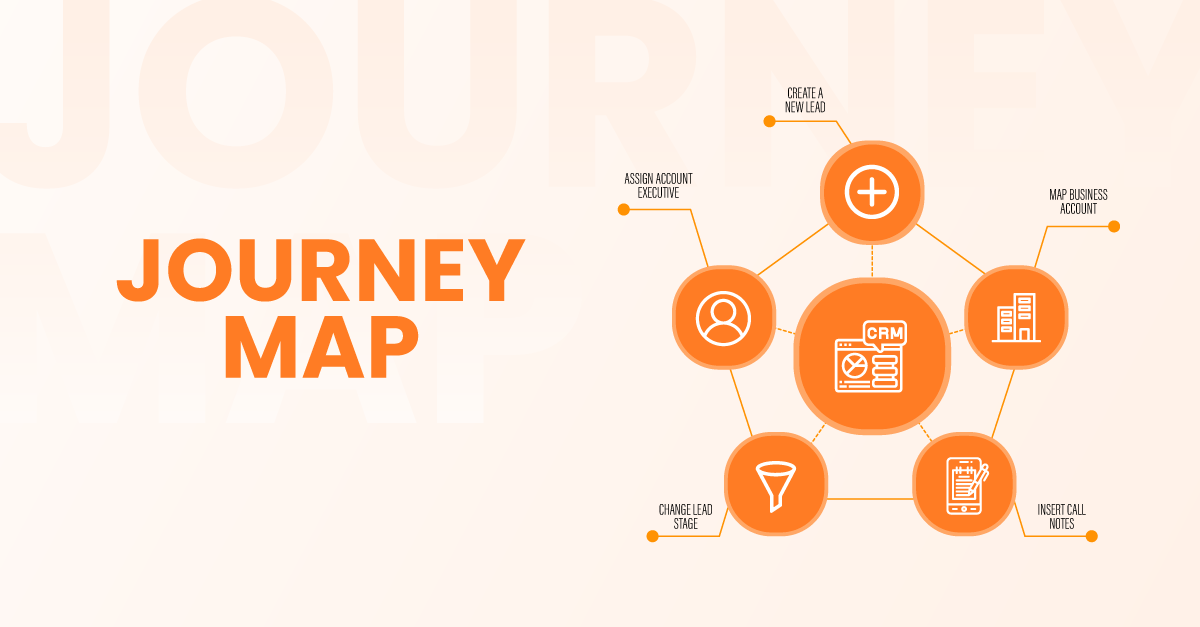Challenges and Benefits of Integrating Human-Centered Design in Enterprise Products
- Jan 22, 2024
- Blogs
- 5 min read
How value is delivered is not always objective. In design thinking, often perceived value adds another dimension to how your action can deliver consequences.
For the naked eye, aesthetics play a huge role in improving perceived ease of use and this always eclipses functionality from a first impression point of view. Contemporary design utilizes analytics and familiar patterns to gain insights, aiming to combine the strengths of established practices for optimal outcomes. In this blog, we explore how Human-Centered Design can improve the overall design process and work in conjunction with the nature of work where we are continuously creating and shipping new features into the product, at scale.
What is Human-Centered Design?
Human-Centered Design, also known as User-Centered Design, is a design framework that prioritises the end-users’ needs, preferences, and limitations at every stage of the design process. The core principle of this approach is to create products, services, or systems that offer optimal usability and accessibility by focusing on the users’ experiences.
The Difference in HCD – B2C vs. B2B Landscape
| Aspect | B2B (Business-to-Business) | B2C (Business-to-Consumer) |
| User Volume and Velocity | Moderate | High |
| User Profiles | Professionals with specialized needs; influenced by organizational goals and industry-specific requirements. | Individual consumers with diverse backgrounds; require intuitive and broadly accessible designs. |
| Decision-Making | Involves multiple stakeholders (end-users, managers, procurement departments), with complex decision processes. | Usually individual and rapid, with decisions made based on immediate appeal and straightforward information. |
| Relationships | Emphasis on scalability, customization, and adaptability to business needs. | Focused on immediate satisfaction and ease of use. |
| Integration | High importance on integration with existing systems and interoperability. | Less emphasis on integration; and more focus on standalone functionality. |
| Support | Greater emphasis on training and ongoing customer support due to complexity. Though simplicity and minimal learning are indicators for success. | Simplicity and minimal learning curve are prioritized, with less need for extensive support. |
| Focus | ROI, efficiency gains, productivity improvements, and cost savings are central. | Emotional engagement, enjoyment, aesthetics, and brand experience are key. |
| Marketing/Branding | More focused on demonstrating value, efficiency, and effectiveness to a professional audience. | Closely tied to consumer trends, emotional appeal, and brand |
Iterative Feedback and HCD
Given that humans sit at the epicenter of Human-Centric Design, its practitioners cannot do without understanding how the design choices they make translate into user action. This often works in the form of iterative feedback from your end users.
Again this works differently for B2B and B2C products. Given the sheer size and volume, interactive feedback is constant for a B2C product. But in B2B environments, the scenario is often different. The people buying your product are not often the ones using them. So if you ask your Go To Market team and reach out to a relevant audience there can be a selection bias.
Under this scenario, it is necessary to insist on speaking with the actual users using your product on the ground over stakeholders who had a role to play in the decision-making of the purchase of your product. More importantly, the bottom-up feedback allows you to optimise for the unknown.
Often more than interviews, the mere act of observation on how they experience your product adds immense insight into decision-making.
Often asking your end users to verbalise their user experience is inviting for specifics to be lost in translation. Hence, more value is added by setting up sessions where you invite users to continue using the product and you remain in the background as a silent spectator taking notes on how they operate. The only way to accomplish this is for the design team to undergo more customer site visits.
A framework that includes the best of both worlds can be implemented, whereby we couple user interviews with observation sessions with the end users. More importantly, we can setup contextual inquiry sessions to get deep into understanding behaviour patterns. Example: why did they not use a filter but instead use the search bar to sort certain results?
Task-based Testing
Task-based testing is a pivotal component of Human-Centric Design (HCD), offering invaluable insights into real-world user interactions with a product. By observing users as they complete specific tasks, designers can identify usability issues, validate design assumptions, and gain a deeper understanding of user needs and behaviours. This approach not only helps enhance the intuitiveness and user-friendliness of a design but also plays a crucial role in the iterative development process.
Through task-based testing, designers can gather both quantitative and qualitative data, leading to continuous improvements and adaptations based on direct user feedback. Additionally, including a diverse range of users in these tests ensures the product is accessible and inclusive, catering to a broader audience. Overall, task-based testing bridges the gap between theoretical design and practical usability, ensuring that the final product aligns closely with user expectations and requirements.
Defining User Personas
Developing empathy maps is a key process in Human-Centric Design (HCD) as it helps designers and stakeholders gain deeper insights into the users’ experiences. An empathy map is a visual tool that captures knowledge about a user’s behaviours and attitudes. It helps teams to empathize with users and understand their needs more effectively.
Empathy map has to be aligned to a user’s roles and responsibilities. Again, we need to revisit them routinely to evaluate and rebuild them based on the transitionary nature of user behaviour.
Journey Maps
Journey mapping is the process of linking the relationship between a persona and your product. This is often achieved by executing a form of “The Day in the Life of a <Persona>” where you map various touchpoints where the specific persona interacts with your product to complete their day-to-day operations. For example, for an admin user, their journey map would consist of segments like access control, or dashboards demonstrating usage of the platform. On the other hand, for a platform user, the journey map would primarily function around the primary features of the platform.
What Can You Learn from Competition
Competition can often teach you a lot when it comes to HCD. From App stores to peer review sites like G2, TrustRadius and Gartner Peer Insights, one can get critical insights into where competition is failing in delivering experiences within their ecosystem. On analyzing whitespace opportunity, it’s necessary to self-reflect
- Are we delivering a different experience
- How are we bridging the gap
- Is there potential for us to improve?
Asking these questions allows us to have an iterative approach to building a visual experience within the product. But more importantly, it would allow us to demonstrate our key differentiators and stand out against the competition.
Conclusion
In conclusion, integrating Human-Centered Design (HCD) in enterprise products is a multifaceted endeavor that balances aesthetics, functionality, and deep user understanding. Through methods like iterative feedback, task-based testing, defining user personas, and journey mapping, HCD provides a comprehensive framework for creating products that resonate deeply with users. Ultimately, HCD is not just about designing products; it’s about crafting experiences that are intuitive, efficient, and aligned with the user’s evolving needs and behaviors. By embracing this approach, enterprises can ensure their products are not only functionally robust but also deliver a unique and satisfying user experience.













